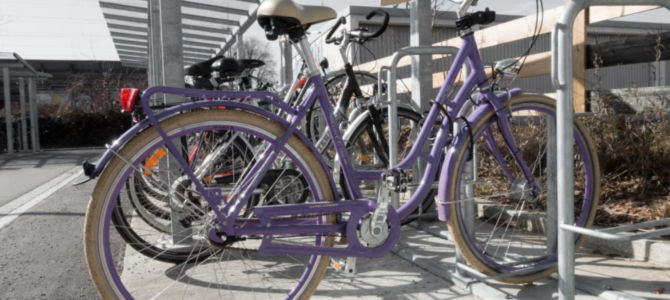Shortly after my husband and I moved to Falls Church, Virginia, in December 2014, I noticed that the Washington Metropolitan Area Transit Authority (WMATA) was constructing a bike shelter — a bike rack with a canopy — at my local Metro train station. How nice, I thought. I don’t bike, but certainly it must be good to live in a community where biking is supported.
A year or so later, I vaguely noticed the bike shelter was still under construction and wondered what was taking so long, before promptly forgetting about it. Forgetting was easy to do because workers were rarely on the project, and little progress was ever made.
Ditto the year after that, the year after that, and the year after that. During that time, I’ve had three jobs and two children, and my family designed and built an entire house, completed years ago, for my parents on our property. The White House switched hands, the House of Representatives turned over, and a new Star Wars trilogy started and finished. But still, no bike shelter.
People are starting to notice. A local reporter reached out to WMATA for an explanation, and the agency explained, “Numerous construction quality issues, including damage caused by a contractor repeatedly drilling into an underground duct bank, led to lengthy delays,” and that WMATA had “determined it was more important to get the project done right rather than get it done quickly.”
I agree that it’s important to get the construction right, and delays happen, sure. But five years and counting? For a glorified bike rack? C’mon.
To make matters worse, the reporter revealed that WMATA’s initial estimate for the project, before the construction issues and delays, was an eye-popping $600,000. When asked how much money WMATA has actually spent on the project, the agency initially didn’t respond. A few weeks later, WMATA grudgingly admitted it has spent $1.9 million on the shelter thus far and an additional $1.9 million on a second shelter at the Vienna Metro station that has also been under construction for five years.

Even if the bike shelter had been completed on time, one wonders whether $2 million, or even $600,000, for a bike shelter is a good use of taxpayer dollars. As the reporter notes, the shelter will house up to 96 bikes, meaning the cost per bike is about $20,000.
Based on my research, it appears the primary benefit of a shelter over a standard bike rack is that the canopy affords bikes some protection from the elements. The East Falls Church Metro station, however, already has abundant bike racks with covering, because they are located under a highway overpass. It also already has bike lockers for rent for those who want extra security.
Perhaps this is just some ingenious, five-year, $2 million practical joke on taxpayers — maybe WMATA’s wry take on “Waiting for Godot.” But more likely, it is simply another example of the inefficiency of government construction projects.
A striking analysis by the Cato Institute’s Chris Edwards and Nicole Kaeding recently explored the issue of cost overruns in government construction projects, explaining, “Cost overruns on large government projects are pervasive,” stemming “from a mixture of deception and mismanagement.” The end result, the pair concluded, “is that taxpayers are likely footing the bill for many projects that cost more than the benefits delivered.”
Making matters worse, Veronique de Rugy at the Mercatus Center has explained that “the political process is biased against dull but valuable projects, such as basic road maintenance, and biased in favor of flashy or grandiose projects, such as high-speed rail, the Big Dig, and the Bridge to Nowhere.” In other words, the government doesn’t simply over-budget, it goes over budget on politicians’ vanity projects.
This dynamic is certainly apparent with WMATA’s construction here. It’s much more exciting to brag about building a swanky new bike facility than, say, to spend money ensuring the existing escalators in the Metro system are in working order. Of course, WMATA can’t brag about anything until it actually manages to finish building the bike shelter.









